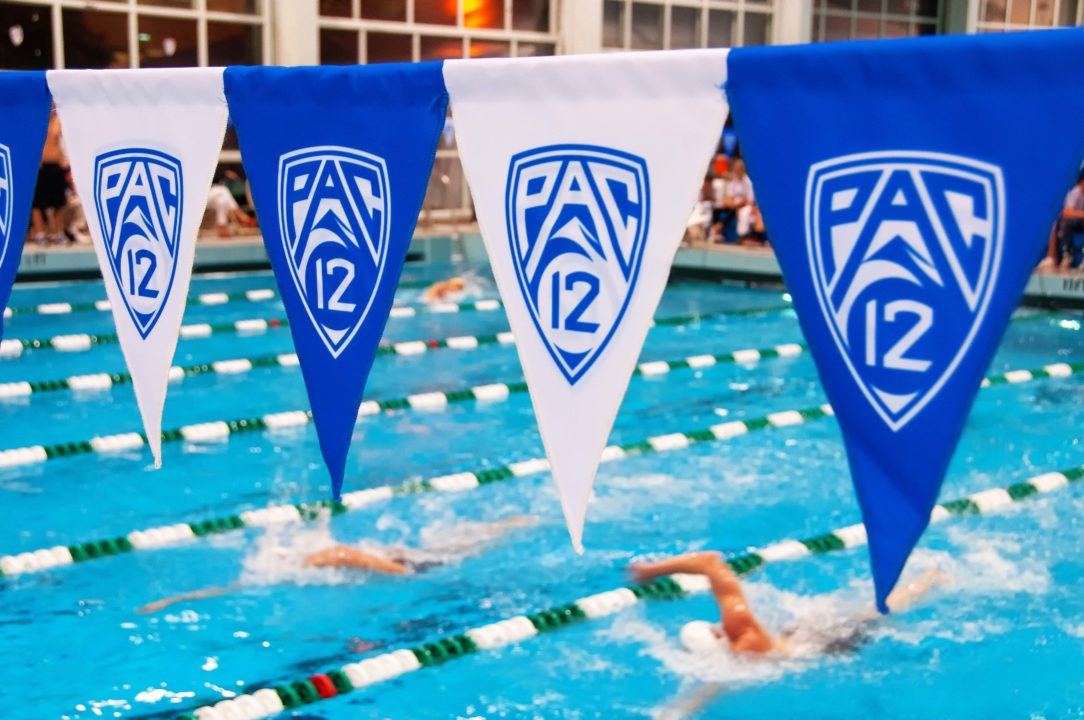SwimSwam Pulse is a recurring feature tracking and analyzing the results of our periodic A3 Performance Polls. You can cast your vote in our newest poll on the SwimSwam homepage, about halfway down the page on the right side, or you can find the poll embedded at the bottom of this post.
Our most recent poll asked SwimSwam readers if USC and UCLA was a good move for college swimming:
Question: Do you think USC and UCLA going to the Big Ten is a good move for college swimming?
RESULTS
- No – 60.9%
- Yes – 20.6%
- Not sure – 18.5%
Shockwaves were sent through college sports on June 30 when it was first rumored and then confirmed that the USC Trojans and UCLA Bruins would be leaving the Pac-12 for the Big Ten in just two short years.
The move is a significant one in the NCAA as a whole, with rumors of other massive changes in the Big 12 and SEC coming in the following days as the Power Five conferences jockey for position in this current realignment phase.
While the move was made with the big money sports such as football and basketball primarily in mind, it begged the question of what its effect would be on the rest of the athletic programs.
For swimming & diving, it leaves just five schools in the Pac-12 that sponsor both a men’s and women’s team, with USC consistently a top-three team in the conference along with Cal and Stanford.
UCLA, which only has a women’s program, has also generally ranked fourth in the Pac-12 behind those three aforementioned teams.
Another hurdle for a sport like swimming with a much smaller budget than football or basketball is the travel, with the conference’s geography now spanning some 2,800 miles.
Just under 61 percent of fans believe this is a bad move for college swimming, while another 18.5 percent are undecided.
Over 20 percent believe it was a positive move, possibly due in part to the news that heading to the Big Ten may have saved UCLA’s Olympic sports.
Below, vote in our new A3 Performance Poll, which asks: Should Carson Foster add the 200 fly as a primary focus for the next Olympics?
ABOUT A3 PERFORMANCE
The A3 Performance Poll is courtesy of A3 Performance, a SwimSwam partner.


I hope I’m just not thinking straight, but would the move toward 2 super conferences (essentially for football) have an overall net negative effect on women’s NCAA sports? Would schools that are not members of a super conference either fall to the FCS subdivision or voluntarily begin reducing the number of funded scholarships from their football programs? And if so, to stay Title IX compliant, would they then need to also defund their women’s programs? I hope not, but I just can’t see why a non super conference school, with by definition a subpar media package, would remain fully funded (or as funded as they currently are) with no chance to play for a national championship or be on TV… Read more »
Interesting thought, though UCLA admitted it probably saved women’s and Olympic sports at that school.
It’s a plausible guess. Right now, there’s so much unknown, so much that has changed, and so much more that is going to change, that it’s hard to discern which plausible guess is going to come true.
With the extra TV money from the football package, I would bet 100% of readers would like to see UCLA add back men’s swimming and diving. New pool, great history, and the AD that dropped S&D and other Olympic sports is gone.
I agree swimmers would like to see UCLA, Illinois and other schools add back Men’s Swimming, but realistically since swimming is not a revenue generating sport, the money will not be added back to the program by the Athletic Director or schools athletic programs. It is a shame. Conference meets with Indiana, Michigan, USC and UCLA along with all other Big Ten programs would be spectacular. However, the travel budgets to get this done would be to big for these schools to support.
I assume they will do fewer travel meets and even fewer conference dual meets. Likely opting for 1 or 2 a semester at most, likely a larger tri or quad meet in the fall semester and then some regional meets they would normally have anyway.
While the budget for non-revenue sports was likely an afterthought, if the school now gets more revenue from the conference now that it has more power, than $1m likely covers most of the costs for all the non-revenue sports.